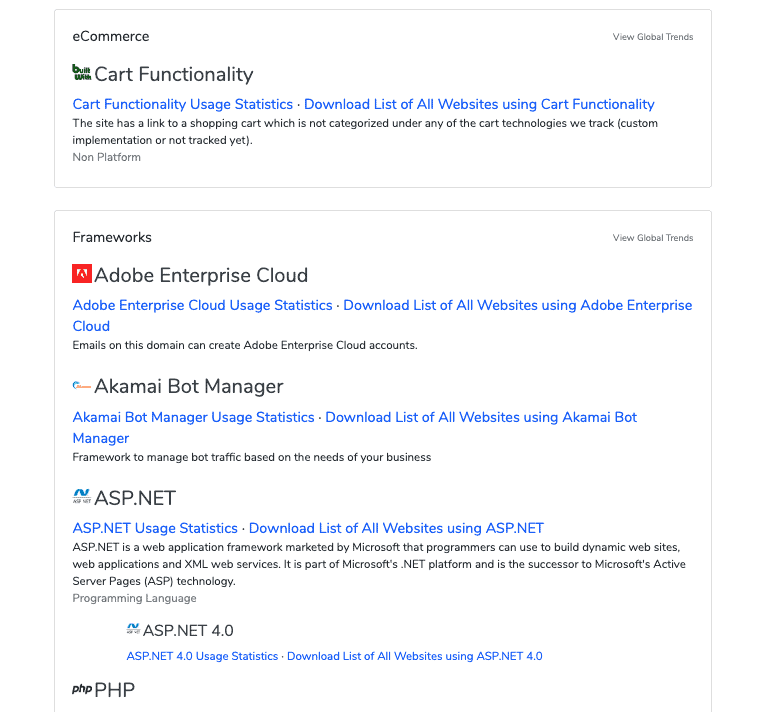While there is tremendous value in keeping your head down so you can focus on your business, every once in a while, you also need to look up and see what other players in the industry are doing. Being aware of what your competitors are up to can help you determine where you stand in the market, so you can make the right strategic decisions.
Fortunately, it’s fairly easy to spy on the competition. Here are a few tools, tips, and tricks you could try.
1. See what’s under the hood
Take a peek at the tools and platforms that your competitors are using with a tool like BuiltWith, which displays information about a website’s tech stack, including:
- What ecommerce platform they’re using
- The marketing software they’re using for traffic and lead gen
- The tracking and analytics tools that are running behind the scenes

That information can provide you insights into what your competitors are doing to drive traffic and sales. Plus, you might even discover tools and platforms you should be using in your own business.
2. Discover your competitors’ sales trends and growth rate by buying from them once a month
Buying from your competitors doesn’t just give a glimpse of the shopping experience that they’re offering. When done strategically, you can actually figure out how many orders they’re getting and what their sales trends are.
2. Competitor analysis: Most ecommerce platforms use ‘sequential invoicing’ (ie, order #s go 001, 002, 003…)
Place a test order once a month on a site, you can tell how many orders they had.
Do it for a year & you know how fast they grew, when their peaks & troughs were, etc.
— dan barker (@danbarker) February 8, 2020
As Dan notes, ecommerce platforms typically generate invoices and order numbers in sequential order.
So, you can purchase something from your rivals once a month, then take note of the invoice number for every order. From there, you can work out how many orders took place since the last time you purchased.

And within a year so, you’ll be able to figure out their peak months and slow seasons, as well as their growth rate.
3. Study their Facebook ads
Need Facebook advertising inspiration? Use a plugin like FadFeed, which filters non-sponsored posts on Facebook. This will fill your feed with nothing but ads.

If you follow your competitors or visited their website recently, chances are you’ll be able to see — and study — their ads as they show up on your feed.
From there, you can gain insights into their strategies around messaging, market positioning, and copywriting, which, in turn, can inform your own marketing decisions.
4. Get regular alerts
The best way to understand your competitors is to keep tabs on them regularly. That way, whenever they’re mentioned in the news (or anywhere on the web) you’ll know about it.
For basic monitoring, you can use a tool like Google Alerts, which sends you an email whenever the keywords you’re monitoring (in this case your competitors) show up on search results.
If you want to filter your alerts, sign up for Owler, which only sends alerts based on certain triggers (e.g., funding, acquisition, product launch, leadership change, etc.). Owler also lets you specify the types of content for which to be alerted. So if you only like to receive press releases, you can configure that in the settings.

And if you care about social media competitor monitoring, you can use Mention, which has social media listening tools that let you track your competitors, measure share of voice, and get the lowdown on their social media content.
The bottom line
When done right, understanding the competition will enable you to refine your own strategies so you can continue to grow and improve. The good news? Ecommerce competitor analysis doesn’t have to be difficult or time-consuming. If you use the right tools and tactics, you can quickly and easily get the lowdown on other players in your market.
